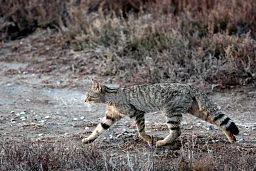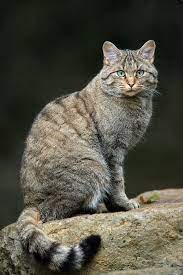
The European wildcat, Felis silvestris silvestris, is a subspecies of the wildcat (Felis silvestris) native to forests across much of continental Europe, including parts of Scotland, France, Germany and Eastern Europe. Larger and more robust than a domestic cat, it is characterized by its distinctive bushy, blunt-ended tail ringed with black bands and tipped in black, a feature often used to distinguish it from feral domestic cats. Its coat is typically moled brownish-grey with subtle stripes, providing excellent camouflage in its woodland and scrubland habitats. Highly solitary and predominantly nocturnal, the European wildcat is a skilled hunter, preying primarily on rodents, rabbits, birds, and amphibians, employing stealth and ambush tactics to catch its prey.

The European wildcat plays an important ecological role as a natural predator of small mammals and birds within its native forest ecosystems. By controlling populations of rodents and other small vertebrates, they contribute to the natural balance of their environments, helping to prevent agricultural damage and the spread of disease. Their presence is a strong indicator of a healthy and relatively undisturbed forest, signifying ample prey availability and a functioning food web. However, a major threat to their survival is habitat loss and, critically, hybridization with domestic cats, which dilutes their genetic purity and wild adaptations. Protecting pure populations of the European wildcat is crucial not only for preserving a unique part of Europe’s natural heritage, but also for maintaining the ecological integrity and natural pest control services provided by this ancient and elusive feline.
Every day, wild cats around the world face threats like habitat loss, poaching, and natural climate progression. But hope isn’t lost. With your support, we can protect these majestic animals and preserve their habitats.
Join our growing community of wildlife champions and help create a safer future for all 40 wild cat species.
Zoo-EV is a nonprofit organization dedicated to the protection and preservation of the world’s 40 wild cat species through education, community engagement, and conservation initiatives. Zoo-EV is recognized as a 501(c)(3) tax-exempt organization by the IRS, with the Employer Identification Number (EIN) 88-3636567.